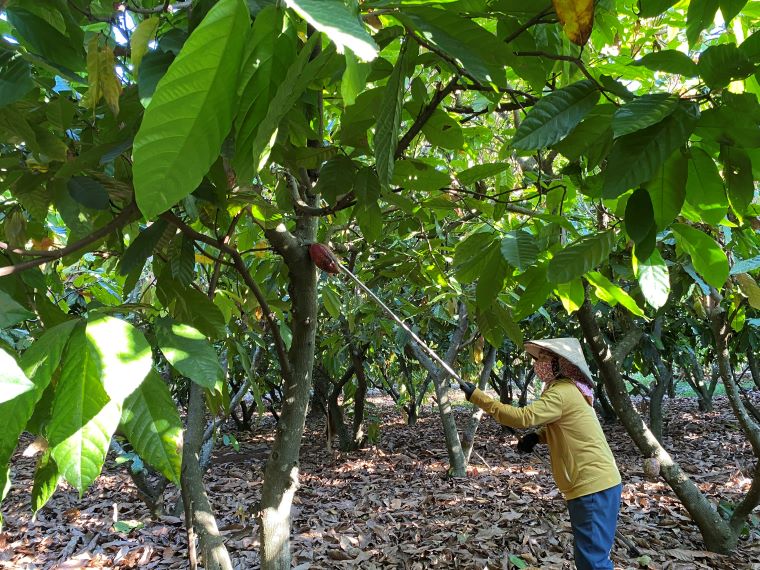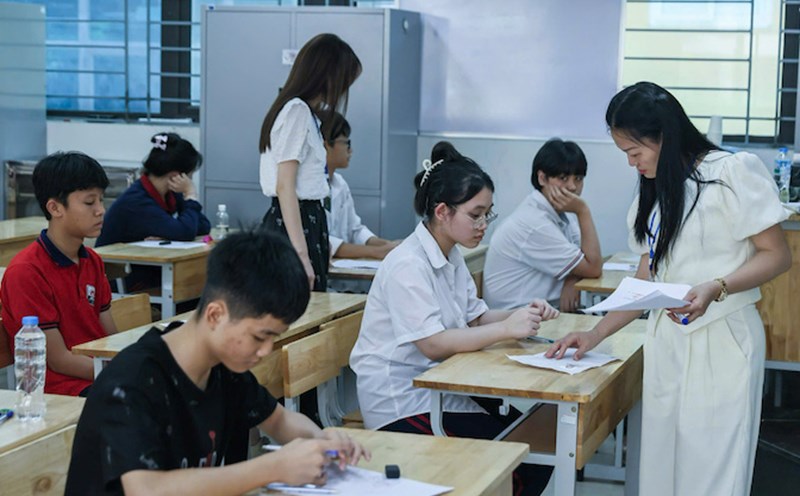The type of cocoa tree that is... burning
Dak Lak is in the planting season. In addition to coffee varieties, cocoa trees are also sought after by many farmers due to record prices in recent times, at times reaching 260,000 VND/kg - the highest level in the past 10 years.
Mr. Nguyen Van Dung (Ea Na commune) with 1.8 hectares of hives in the business period said that this year, the highest price in many years. Thanks to favorable weather, the plant has few pests and diseases, and has many fruits from root to tops. On average, 1 hectare yields about 2.5 tons of seeds.
The high price of cocoa has led to a sharp increase in demand for seedlings. Many farmers want to grow but cannot find seeds.
Mr. Ho Van Nam (Ea Kao ward) said that he wanted to grow 0.5 hectares of cocoa but called many places without seedlings.
"I went to seed selling points and cooperatives but everywhere said they were out of stock, I had to order from now until next year's crop" - Mr. Nam said.
Mr. Nguyen Van Sy, Director of Tan Thanh Cocoa Agricultural Cooperative (Ea Na commune), said that the demand for seedlings has increased dramatically.
"I have exported potholes to nursery gardens in Dong Nai and nurtured seedlings to serve people in Dak Lak, Lam Dong... However, I sell all the nests as much as I can, and my home gardens are out of seeds to supply" - Mr. Sy affirmed.

The problem of finding the position of cocoa trees
The increase in cocoa prices is bringing a positive signal, contributing to increasing people's income and opening up opportunities for the cocoa industry to regain its former position.
However, this is also the time to look back at the past to avoid repeating the vicious cycle of planting and cutting that used to occur due to a lack of stable markets. The problem is to develop sustainably, build an oriented production base, and avoid previous mistakes.
Dr. Pham Hong Duc Phuoc - former lecturer at Ho Chi Minh City University of Agriculture and Forestry - said that cocoa trees have appeared in Dak Lak since 1980.
At that time, the locality was assigned to grow cocoa on a large scale to serve exports. Cocoa prices were high at that time, about 2,000 USD/ton, equivalent to 4 taels of gold - at one point, only gold had bought 1 hectare of land.
Thanks to its great potential, the cocoa area is continuously expanding, expected to help farmers escape poverty. However, after that, the export market encountered difficulties, orders were stagnant, cocoa beans were in stock and no one could buy them, forcing farmers to cut down trees.
From this lesson, according to Dr. Phuoc, to develop cocoa sustainably, it is necessary to ensure stable output, while equipping farmers with appropriate farming techniques.
Dr. Dang Ba Dan - Head of the Representative Office of the National Agricultural Extension Center in the South Central and Central Highlands - said that through surveys of many cocoa growing areas in Dak Lak, he found that the productivity of cocoa trees here is quite high.
However, there is currently no intercropping research model to assess the effectiveness and increase land use value.
In addition, a large amount of by-products from cocoa trees have not been effectively utilized. Specifically, about 2/3 of cocoa shells are being paid, while cocoa rice - the white meat surrounding the seeds - is delicious but has not been properly exploited.
According to Dr. Dan, more research and application of technology into practice are needed to comprehensively develop the high-value cocoa chain, making the most of the potential that this type of tree brings.
According to the Department of Crop Production and Plant Protection of Dak Lak province, cocoa trees are one of the five industrial crops in the province, with an area of over 1,000 hectares.











